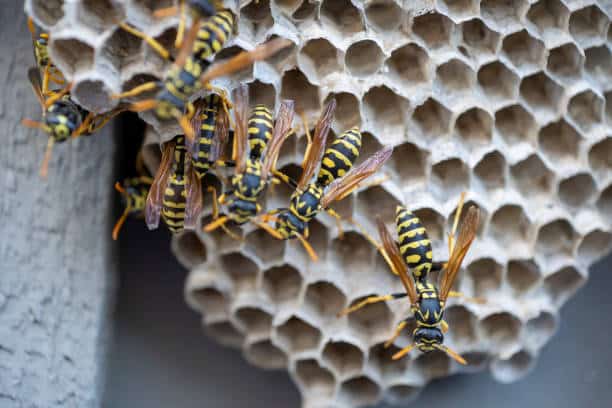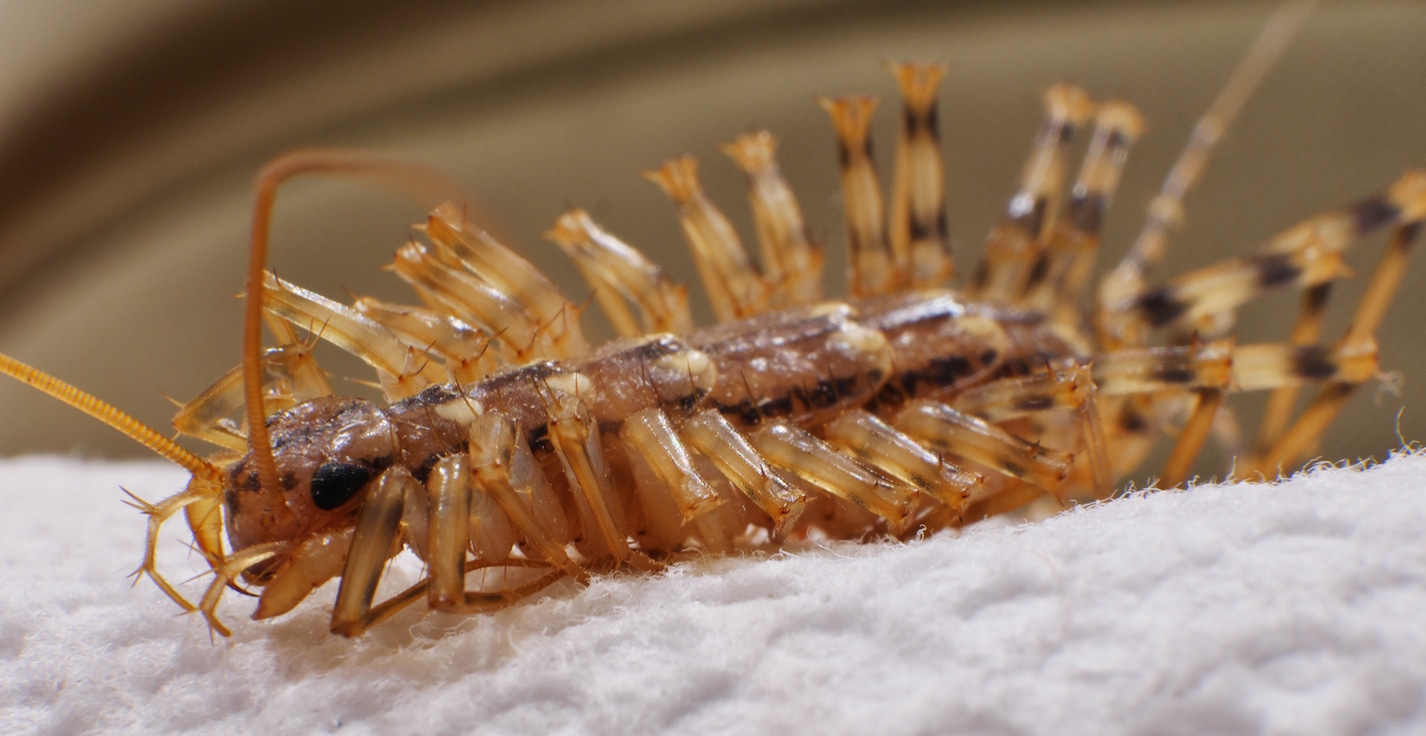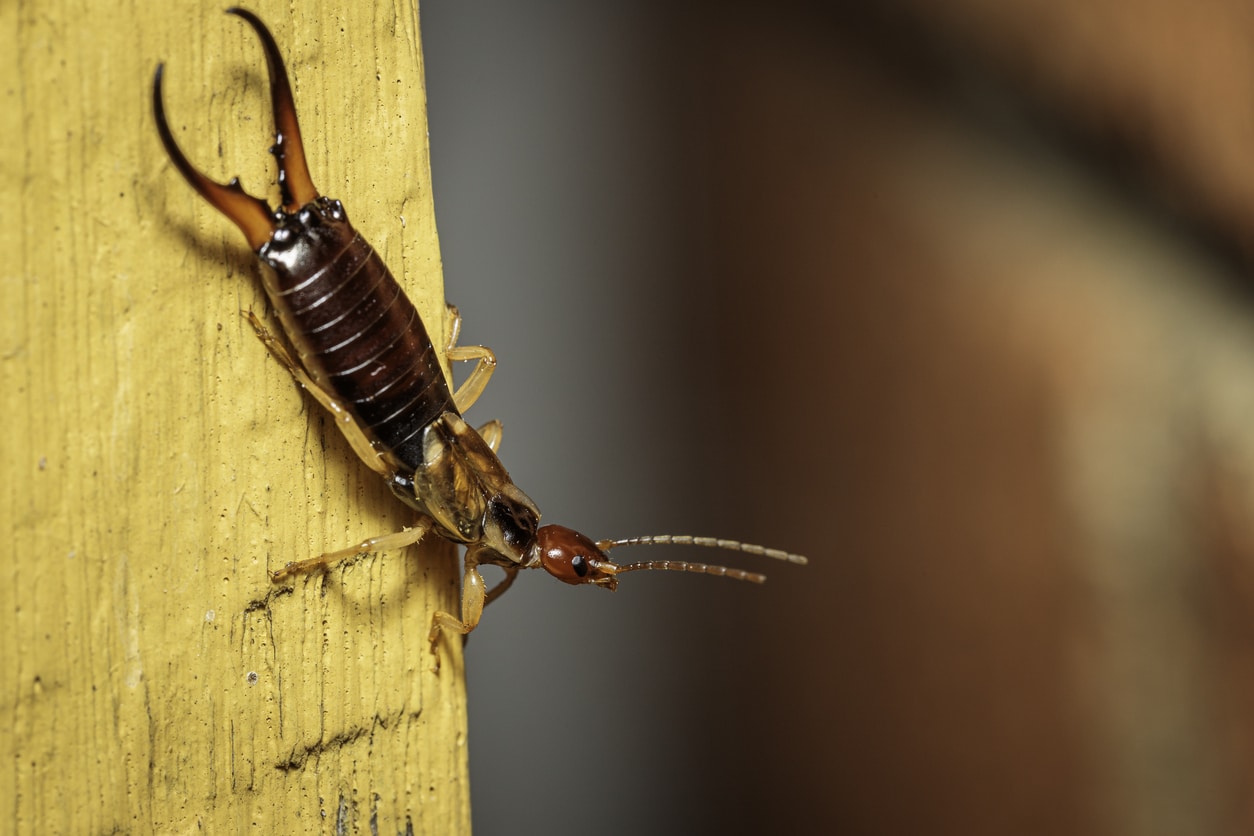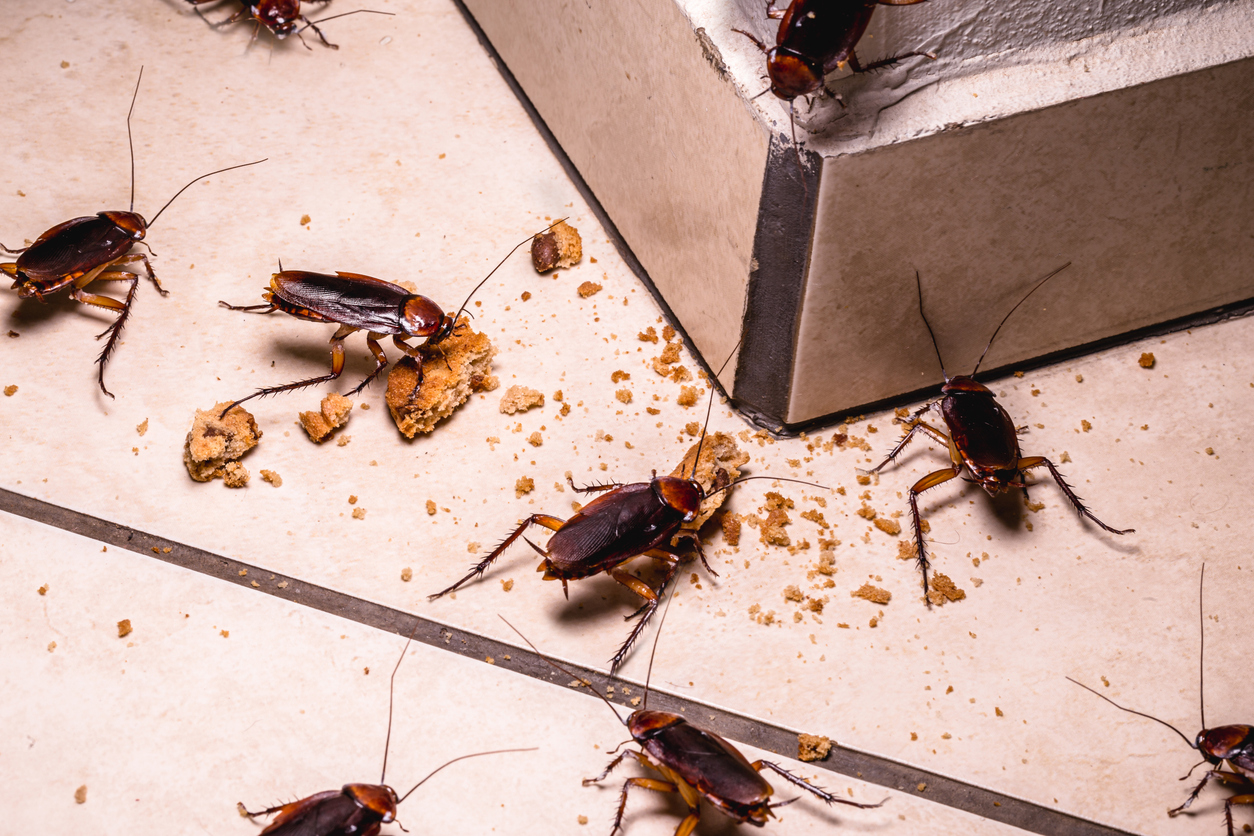The holidays bring cozy gatherings, festive decorations, and plenty of warmth indoors. But it’s not…

Wasp or Bee? How to Identify & Handle Stinging Insects Safely
Summer is here, and with it comes the unwelcome presence of stinging insects. Whether you’re spending time in your backyard or exploring Michigan’s great outdoors, encountering wasps or bees can quickly turn a pleasant day into a painful experience. Knowing how to get rid of wasps and identifying these insects correctly is crucial for staying safe.
At Creature Control, we understand the importance of distinguishing between wasps and bees to handle them effectively. This guide will help you recognize these common stinging insects, understand the risks they pose, and provide essential tips on what to do if you encounter them. With our help, you’ll be ready for an informed, safe summer, and if there’s a point where you just need a pro to handle something, we’ve got just the team to do it.
Common Stinging Insects in Michigan
Michigan’s summer months bring a variety of stinging insects, making it essential to know what you might encounter. The most common stinging insects in the state include yellow jackets, hornets, and carpenter bees.
- Yellow Jackets: These aggressive wasps are often found near food and sugary drinks. They build their nests in the ground or wall cavities, making them a frequent nuisance around homes and outdoor gatherings. Yellow jackets are known for their painful stings and can sting multiple times, which makes them particularly dangerous if disturbed.
- Hornets: Larger and more aggressive than yellow jackets, hornets also pose a significant threat. They build large, paper-like nests in trees, shrubs, or under eaves. Hornets’ stings are more painful and can cause severe swelling. Their nests can house hundreds of insects, making them a severe risk if found near human activity.
- Carpenter Bees: These bees are less aggressive than yellow jackets and hornets but can still be a concern. Carpenter bees bore into wood to create nests, which can cause structural damage to homes and other wooden structures. Although males cannot sting, females can, but they rarely do unless provoked. Their presence is more often noted by the damage they cause rather than by their stings.
Understanding the specific characteristics and behaviors of these insects can help you avoid their stings and handle their nests appropriately. Awareness and proper identification are the first steps to ensuring your safety and preventing infestations.
Identifying Wasps & Bees
Identifying wasps and bees can be tricky, but there are some key features to look for. Wasps are generally slender with smooth bodies and legs. They have narrow waists and can be brightly colored with black and yellow markings. Bees, on the other hand, are usually more robust with hairy bodies. They are generally duller in color, with more muted yellows and browns.
Safety Risks of Stinging Insects
Health Risks & Allergies
Stings from wasps and bees are not just painful; they can also pose serious health risks. For most people, a sting results in temporary pain and swelling. However, some individuals may experience severe allergic reactions, known as anaphylaxis, which requires immediate medical attention. Symptoms can include difficulty breathing, swelling of the face or throat, and dizziness. It’s essential to be aware of your allergy status and have a plan if you are stung.
Preventive Measures
To reduce the risk of encountering stinging insects, consider using some common preventative measures.
Keep food and drinks covered when outdoors. Bees and wasps are both attracted to sugary substances, so be vigilant about spills and open containers.
Make sure that your home is well-sealed to prevent insects from entering. Check for gaps around windows and doors.
Regularly inspect your property for nests. If you find a wasp nest, it’s important to know how to get rid of a wasp nest safely, which may involve professional help.
Taking these precautions can help minimize your chances of painful encounters with stinging insects this summer.
What to Do When You See Stinging Insects
Immediate Actions
Encountering a wasp or bee can be alarming, but staying calm is crucial. Here are some immediate actions to take if you see stinging insects:
- Stay Calm and Move Slowly: Sudden movements can provoke stinging insects. If a wasp or bee approaches you, remain still or move away slowly.
- Avoid Swatting: Swatting at stinging insects can make them feel threatened, increasing the likelihood of a sting.
- Cover Food and Drinks: If you’re outdoors, cover food and beverages to avoid attracting wasps and bees.
Professional Help & Removal
While some minor encounters with stinging insects can be handled independently, more significant infestations or nests require professional intervention. There are some situations when you should call for skilled help.
- Large Nests: Professional pest control services are necessary if you discover a large wasp nest or multiple nests on your property. Attempting to remove large nests on your own can be dangerous.
- Aggressive Behavior: If the insects are aggressive, it’s best to leave the removal to experts with the proper equipment and training.
- Structural Damage: Carpenter bees can cause damage to wooden structures. Professional exterminators can safely remove these bees and offer solutions to prevent future infestations.
Creature Control offers comprehensive pest control services, including the safe removal of wasp and bee nests. Our experienced team can assess the situation and provide effective solutions to keep your home and yard safe.
Safer Summers & Fewer Stings With Creature Control
When it comes to managing stinging insects, Creature Control is your trusted partner. Our team of experts is trained to handle wasps, bees, and other pests safely and effectively. Whether you need help with identification, preventive measures, or nest removal, we are here to assist you. Partner with Creature Control today to learn more about our services and how we can help you enjoy a sting-free summer.
Discover Expert Pest Control at Creature Control in Michigan
Creature Control in Michigan offers professional pest control services to keep your home and yard safe from stinging insects and other pests. Call us at 800-441-1519 or reach out online to schedule a consultation. We serve various locations across Michigan, ensuring that you and your family can enjoy the outdoors without the worry of stinging insects.
Contact Us Today!
"*" indicates required fields
Call Us
For Immediate Help
Call 1-800-441-1519 to talk to one of our local wildlife experts. Or, fax us at (734) 551-9795.
Business Hours
Monday – Friday: 8 a.m. to 6 p.m
Saturday: 8 a.m. to 2 p.m.
Sunday: 8 a.m. to 12 p.m.
For After-Hours Help
Call (877) 623-9190. For after-hours emergencies, please be aware that additional charges will apply. We can also be reached by fax at (734) 551-9795.


